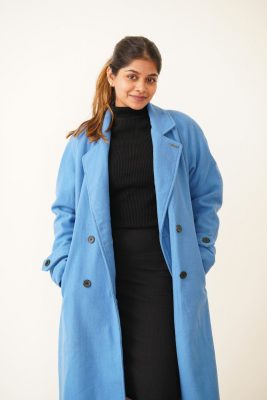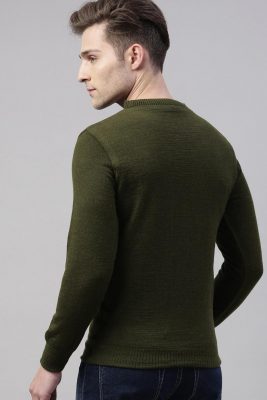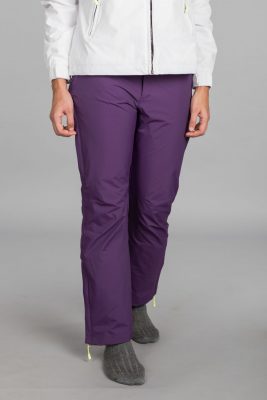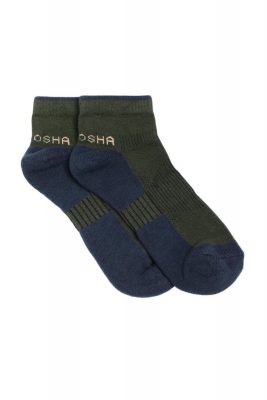
Wondering what to wear in Georgia in winter? Keep reading!
Sharing its name with a state in the United States (which has no relation to the state whatsoever), ‘Georgia’ is a country located to the south of Turkey. It is further surrounded by Russia to its north and east, Armenia to its south, and the Black Sea to its west. Georgia has Tbilisi as its capital. Being included as a developing country, its ranking is high on the Human Development Index.
Acting neighbour to Russia, winter in Georgia can get similarly cold. In such a case, the question of ‘What to wear in Georgia in winter?’ might pop up. Read on to know more about the climate of Georgia and further on how to pack for a visit to this country.

Website: Check out Kosha’s winter wear collection here! (free delivery to Dubai for orders above Rs.10,000/-)
Table of Contents
Georgia in Winter: Guide to What to Wear in Georgia in Winter
So whether you are heading to a city or the countryside in Georgia, these are our tips to help plan your getaway!
Temperatures in Georgia in winter
Georgia has four main seasons: spring, summer, autumn, and winter.
Spring –
Spring in Georgia lasts from March to May. The average temperature range during the Spring season is from 1.5 degrees Celsius to 24 degrees Celsius. The climate in Spring is considered summerlike along with occasional rains. On May 26th, Georgia celebrates its Independence Day.
Summer –
Summer in this country lasts from June to August. The average temperature during this season ranges from 13 degrees Celsius to 31 degrees Celsius. As evident by the maximum temperature, summer brings out the hot and sunny side of Georgia. Being near the Black Sea, the western part of the country remains comparatively cooler due to the presence of humidity and moisture.
Autumn –
Autumn in Georgia lasts from September to November. It is considered the best season for tourists to visit this country. The average temperature during autumn in this country is from 4 degrees Celsius to 26 degrees Celsius.
Winter –
Winter in Georgia is categorized as cold and wet. The addition of rains adds to the coldness felt in the region thus reducing the overall temperatures. During winters, the majority of the tourist activities are shifted to the mountains.
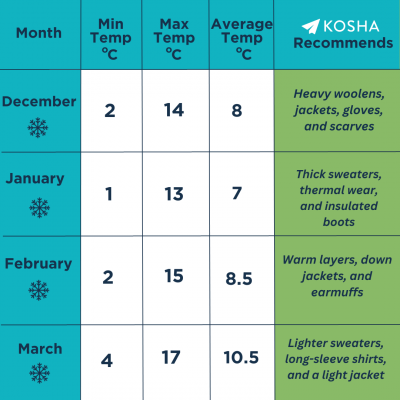
Why visit Georgia in winter?
For this winter trip, choose a place that you might not have visited before. A Georgian winter holiday might be just the thing you need! Read on to find out what all this country has in store for you.
Georgia offers abundant snow and majestic landscapes along with quiet cities, snow-capped mountains, and frosty lakes. December to February (the Georgian winter period) is the best time to visit the country rather than summer or other seasons. (https://navalpost.com/) Try your best to catch the skiing period in this region.
Research well in advance and plan a detailed itinerary to have a hassle-free trip. The Caucasus Mountain range adds to the glory of a Georgian winter escapade. The roads to Kazbegi and Mestia are open to tourists. There are also some mountains that might be shut to tourists during peak wintertime.
Tbilisi, the capital of Georgia also has a lot to offer to tourists. Georgia is a traditional country that has managed to stay very close to its Christian roots. That is why Christmas is a great time to visit this place. Orthodox Easter also makes for another great time for a visit.
Read more: Winter in Finland- Dressing for extreme cold
It is of chief importance that you know that Georgia celebrates its Christmas 13 days after the world, making 7th January the Orthodox Christmas Day. January 14th is the Orthodox New Year and January 19th is the day of Orthodox Epiphany.
On December 17, the country celebrates St Barbara’s Day which they call Barbaroba. This is considered ‘the day of destiny’ on which the people are to reminisce and look back at their shortcomings of the past thus preparing themselves for the new, fresh year. Visiting Georgia during this holiday and festive period can help you take your trip up a notch. You can get the taste of Georgian culture along with seeing the country beautified and in its festive spirits.
Another must-do on your list should be to try Georgia’s wine. The wine-making procedure of Georgia is considered a UNESCO heritage one. The traditional method of fermenting wine in Georgia is without yeast or chemicals.
Do pay a visit to these regions in Georgia which are renowned for their winemaking skills in the world. These are the regions of Kakheti, Kartli, Imereti, Adjara, and more. Keep aside one day of your trip and tour these places to get to sip on some authentic wines. Being the home to such rich culture, Georgia is also considered the birthplace of wines.
There are Christmas villages spread all across Tbilisi, at the First Republic Square, Orbeliani Square, etc. with live shows and music concerts and performances. The New Year is also a grand affair in the country with colourful fireworks seen in the sky.
If you are the adventurous sort and are looking for places to ski, don’t worry, Georgia has plenty! Places like Gudauri, Bakuriani, Mestia, Svaneti, etc all offer great hotels and skiing resorts for tourists.
Georgia has terrains and mountain ranges that can be made the most of by people of all ages. Make sure you plan and book in advance to get great discounts and deals on hotels and travel.
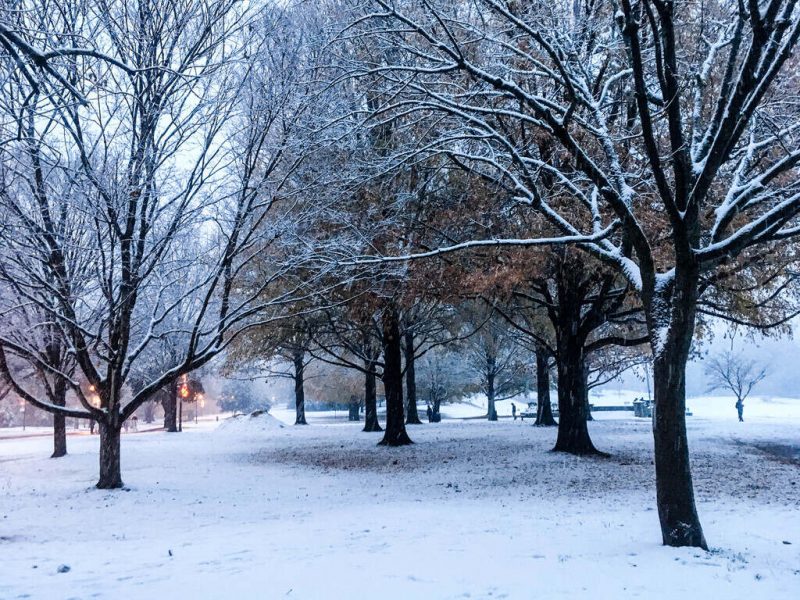
Snow covered Georgia
After you get a look at the weather and climatic conditions of the country, the kind of winter wear that needs to be packed comes next on the list. Depending upon the purpose of your visit, decide the type of activities you will be covering.
Adventure sports like skiing, ice skating, etc will require outfits that are made with snowproof fabric. Even the kind of shoes that you carry need to be looked after. Comfort should be prioritized over aesthetics or visually pleasing winter necessities. Here is what to pack for winter in Georgia.
Outerwear like puffer jackets, parkas, or a coat
Winter Layering is an essential element of wearing winter wear and must be looked into before planning a purchase. Winter layering includes outerwear, middle layers, and base layers. All these together form the kind of winter gear that is strong enough to combat the extreme cold.
Outerwear or shell layers form the outermost layer and are therefore the very first hurdle for the cold winds to break. This is the reason the shell layers need to be highly insulating. When it comes to packing, one must also make sure that the winter clothes they carry are compressible and easy to pack.
Kosha’s range of shell layers is warm and insulating while being easy to carry. They are light in weight without compromising the heat they provide to the users. The outerwear range is further divided into winter coats like parkas and puffer jackets.
Parkas are made up of Parka material nylon, polyester, etc, and puffer jackets are fleece lined and made of polyester fleece and nylon. Both of these jackets are snow, water, and wind-resistant.
Parkas are knee-length in size whereas puffer jackets are waist-length. Both of these have unique features. The main distinguishing factor would be the fabric or the make of the jackets and the length of the two.
Sweaters and Pullovers
Garments like sweaters or pullovers are the classic no-brainers when it comes to winter packing. They are the safest choice as they promise the required insulation without disappointing the users. Jackets today have replaced sweaters as the new classic winter attire.
Kosha’s range of sweaters is made of a blend of merino wool and acrylic and are suitable in a temperature range of 5 degrees Celsius to 15 degrees Celsius by themselves. When paired with appropriate layers, they can be worn in temperatures as low as 0 degrees Celsius. Kosha’s range of sweaters includes a choice between full-sleeved sweaters and sweater vests.
Olive & Camel Merino Blend Reversible Sweater
Base layers
Baselayers form the innermost layering of winter apparel. In extremely cold temperatures, it is imperative that one follows the process of winter layering and dresses accordingly, depending on one’s resistance to cold.
Baselayers perform two key functions namely preserving the body heat by not letting it escape and shielding the body from cold winds. Being the innermost layer, it remains in constant contact with the body. Thus, it is crucial to ensure that the base layer we choose is made from soft material.
Kosha’s range of base layers is made with a unique blend of merino wool and bamboo. After a client spoke of the itchiness that pure merino wool base layer provided, Kosha reinvented its product and made a stronger, more user-friendly range of products.
Base Layer Collection from Kosha
The current base layers are durable with antibacterial properties. They are also moisture-wicking with anti-odor qualities. These base layers can be worn in a temperature range of 15 degrees Celsius to 10 degrees Celsius by themselves. With an appropriate pairing of layers, they can be worn in temperatures as low as -20 degrees Celsius.
Woolen bottoms – Snow Pants
In regions that tend to snow, wearing waterproof winter wear is necessary. In such areas, wearing denim or any such water-absorbing fabric can cause discomfort especially when winter activities are considered.
For ensuring a free flow of movements in skiing or other winter activities, you must carry the most fitting fabric for snow. Snow pants offer breathability with a stable and comfortable fit for the users.
Kosha’s range of snow pants has the features of thigh vents, a single jersey lining, and elastic for a better grip. They can be worn in a temperature range of 5 degrees Celsius to – 20 degrees Celsius.
Purple Waterproof Ski Pants | Women
Warm accessories
Winter accessories make for the informal fourth layer when it comes to winter layering. However, winter accessories are enough to make or mar your trip. They comprise gloves, mittens, scarves, stoles, shawls, socks, beanies, earmuffs, monkey caps, and more.
Gloves –
Gloves and mittens protect your hands from cold weather conditions. Apart from insulation purposes, the gloves also provide the necessary grip as the hands tend to go numb in extremely cold areas.
Scarves –
Scarves, stoles, and shawls cover the otherwise exposed area of the body i.e., the neck region. This fourth layer is an important addition as it doesn’t let the cool air seep in, in turn preserving the body heat.
Money caps, beanies, and earmuffs –
These winter accessories shield the head and ear area. The ears act as a hotspot when it comes to cold air seeping in. That is why, even if you are not planning to wear beanies or earmuffs, wear cotton balls in your ears and you instantly feel warm and more at ease.
White & Grey Acrylic Wool Checked Border Beanie
Warm shoes or boots
In snowy places, it is important to carry the kind of footwear that does not restrict your activities. Especially if you are visiting a place that has numerous activities like ice skating, skiing, and more.
Make sure you research well and carry a comfortable pair of winter shoes. Remember to wear these out a little before the trip to make sure they adjust to your feet’s requirements. It is also crucial to carry your exact size as a size smaller or larger can lead to blisters and shoe bites.
Warm socks
The correct kind of footwear constitutes winter shoes and socks. Carrying the right pair of socks along with the shoes can help a lot, especially when a lot of walking is involved. Socks protect the feet from the shoes and prevent any kinds of blisters or shoe bites.
Kosha’s range of no-blister socks is breathable and made out of merino wool. With a mesh weave structure, these are available in arch support to avoid slippage. There is a soft rib present with a reinforced cushion heel to toe for additional support. These can be worn by themselves in a temperature range that extends from 10 degrees Celsius to 40 degrees Celsius.
Olive & Navy Ankle Length Cotton Socks Pack of 2
Planning a trip to a completely new place can get a little overwhelming at times. But, make sure that doesn’t stop you from exploring a new place and getting to know a new culture. For efficient planning, research should not be overlooked. Research and study the place of your visit, look at made itineraries and guides, go through reviews of those who have visited the same region, and learn from their experiences.
Look at your mode of transport and book them in advance to get better deals and fairs. Decide your route and decide the purpose of your visit. If you are visiting the place for leisure, make sure the hotel has all the facilities you look for.

Georgia in Winters
If you are more into exploring and being outdoors, invest your time and money in seeing more instead of the boarding and accommodations.
Make sure you have a Georgia packing list ready. Have a schedule and be as organized as possible. If you are a solo traveler who is looking at backpacking their way through the country, prepare for the trip and invest your time and energy in the planning process and not only on the trip.
Your love for travel can easily be hampered by your hate (or laze) for planning and researching. Georgia travel needs you to read more about the country and plan the ‘things to do’ on your own.
After this initial planning phase is over, look at your winter gear and apparel. According to your tolerance to cold, choose the correct winter fit. If you are looking at adventurous activities like skiing or skating, carry breathable winter wear that allows free flow of movement.
View this post on Instagram
FAQ’s
Q: What is the weather like in Georgia in winter?
A: Cold and snowy, with average temperatures ranging from 2-8 degrees Celsius.
Q: What are the best things to do in Georgia in winter?
A: Ski, snowboard, visit the Christmas markets, bathe in sulfur baths, and enjoy the winter scenery.
Q: What should I pack for a winter trip to Georgia?
A: Warm clothes, waterproof boots, a hat, gloves, and scarf.
Q: Is it safe to travel to Georgia in winter?
A: Yes, but be sure to check the road conditions before driving, as some roads may be closed due to snow.
Q: How expensive is it to travel to Georgia in winter?
A: Georgia is a relatively affordable country to visit, but prices may be higher during the peak winter season.
Conclusion
In conclusion, dressing appropriately for winter in Georgia requires a balance between staying warm and comfortable while being prepared for the variable weather conditions that can occur in this southern state. Layering is key, starting with a thermal or moisture-wicking base layer, followed by insulating layers like sweaters or fleece, and topping it off with a waterproof and insulated outer layer to protect against rain and cold winds. Don’t forget to include accessories like gloves, scarves, and a warm hat to keep extremities cozy.
Remember that Georgia’s winter weather can be unpredictable, with occasional cold snaps and the potential for snow or ice in some areas. It’s essential to check the weather forecast regularly and adjust your clothing accordingly. With the right clothing choices, you can enjoy all that Georgia has to offer during the winter months while staying warm and comfortable.
For any queries related to wearing thermals, base layers, or winter wear in general, visit Kosha’s store and get a free consultation! While you’re at it, check out Kosha’s website for the wide range of thermals and jackets available at Kosha.
This post was written by Kosha Team Member – Sanika Totade
